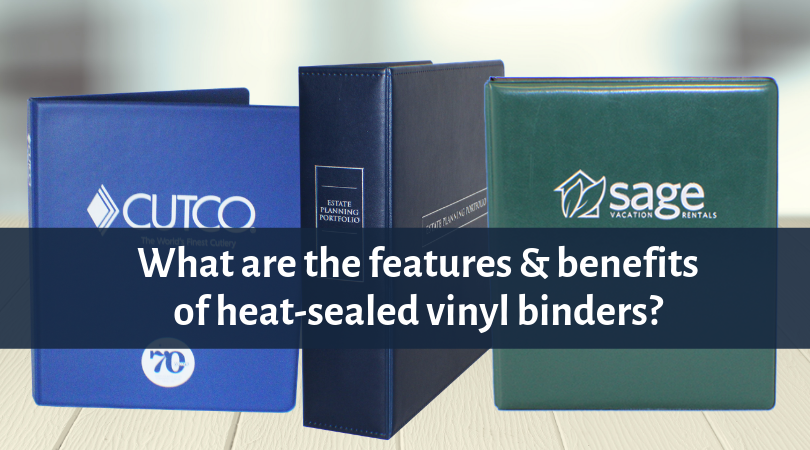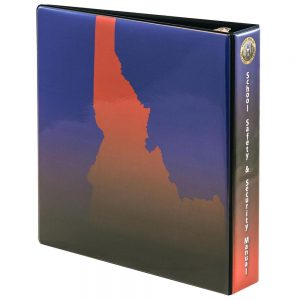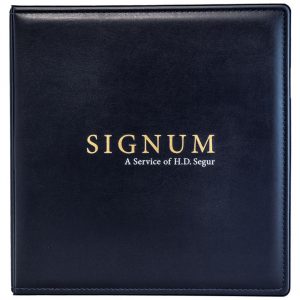
Vinyl binders are also known as heat-sealed binders.
Vinyl is available in many colors and different finishes and can simulate leather when you’re on a fixed budget. Any of these materials can usually be color matched and require mill-run quantities:
- Calendared vinyl is a thin material.
- Expanded vinyl is thicker and softer. Expanded vinyl is more expensive, and is often substituted as a faux-leather like material.
- Supported vinyl is expanded material with a vinyl backing. This type of material cannot be heat-sealed, but rather must be sewn.
Cover stiffeners are typically chipboard with varying weights depending on the application. .095 is typical but other materials that can be used between clear vinyl may include metal, plastic and corrugated substrates.
Decoration on vinyl binders varies by material.
- Calendared vinyl can be decorated with screen printing and/or 4-color process or 4-color digital printing.
- Smoother “grains” allow for more intricate printing.
- 4CP offset printing not done in quantities less than 1,000. It can be cost prohibitive on quantities under 2,000. Always done on white vinyl.
- Very competitive on higher qty.
- Heavy ink coverage on sealed areas (hinges) can cause the underlying color to show through.
- Expanded vinyl is not typically offset printed.
Entrapment binders, also known as overlay binders, are vinyl binders have printed card stock sealed under clear vinyl. Card perfectly fits covers. This is low cost way to get economical 4CP printing at smaller quantities.
Other vinyl decorating techniques include:
- Stamping – color applied to surface via colored tape (often metallic) and die.
- Blind deboss – making a recessed image on material with die – no added color.
- Stamp deboss – recessed image with added color.
- Screen deboss – screen printing 1 or more colors, then recessing the image.
- Tipping printed label, engraved plate, or dome label in debossed area.
- Applique – applying one vinyl to another either on top of, or joined.
- Contrasting cover and liner materials.
- Topstitching – adds a high end look and feel. Primarily used with expanded vinyls.
- Padding – added to chipboard to impart a more luxurious feel. Best when used in combination with topstitching.
- Post embossing – the entire sheet of material is embossed with a consistent pattern.
Vinyl heat-sealed binders can work well in applications where you want a leather-like feel, without the cost. Where topstitching is added to a heat-sealed binder it gives a perceived higher value. These types of binders are often used for financial planning, insurance, and legal applications.

